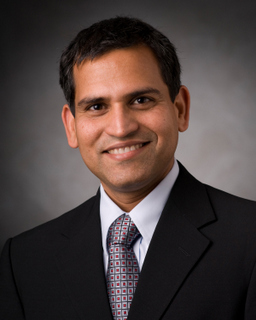MANISH KUMAR
Pennsylvania State University
Membranes are rapidly becoming the fastest growing platform for water purification, reuse, and desalination. They are also important for industrial separations, and are being considered for applications involving catalysis and sensing. All synthetic membranes have selectivity-permeability tradeoffs, i.e if a membrane has high permeability, it will have a lower selectivity between two solutes or between a dissolved solute and a solvent. This is due to the mechanism of solution-diffusion through a wide distribution of free volume elements in non-porous membranes, such as reverse osmosis membranes used for desalination, and a wide pore size distribution in porous membranes. A simple solution, in concept, to such a challenge is to do what nature does – design precise angstrom to micron-scale pores with no polydispersivity. However, so far such an ideal has not been realized in synthetic membranes and in particular for angstrom-scale separations. I will describe what we think is an achievement of such an ideal based on pillar[5]arene artificial channels, where pore selectivity and permeability are preserved and demonstrated at each stage from chemical design, molecular transport characterization, simulation, self-assembly to finally membrane fabrication and testing, resulting in bioinspired artificial water channel based block copolymer membranes.
 MANISH KUMAR is an Associate Professor of Chemical Engineering, Environmental Engineering (by courtesy), and Biomedical Engineering (by courtesy) at Penn State. He received his bachelor’s degree from the National Institute of Technology in Trichy, India in Chemical Engineering. He completed an MS in environmental engineering at the University of Illinois, and then worked for approximately seven years in the consulting industry on applied research projects (lab, pilot, and full-scale) on membranes for water and wastewater treatment. Manish returned to Illinois to complete a PhD in the area of biomimetic membranes and then conducted postdoctoral research at the Harvard Medical School on the structure of water channel proteins, aquaporins. He works in the areas of membrane protein structure and biophysics, membrane protein enhanced synthetic block copolymer membranes, and on developing artificial membrane proteins and biocompatible electrical interfaces. The overarching interest of his group, however, is in developing novel strategies to improve the performance of separation membranes using truly interdisciplinary approaches. He has received the NSF CAREER award and the Della and Rustom Roy award for outstanding materials research.
MANISH KUMAR is an Associate Professor of Chemical Engineering, Environmental Engineering (by courtesy), and Biomedical Engineering (by courtesy) at Penn State. He received his bachelor’s degree from the National Institute of Technology in Trichy, India in Chemical Engineering. He completed an MS in environmental engineering at the University of Illinois, and then worked for approximately seven years in the consulting industry on applied research projects (lab, pilot, and full-scale) on membranes for water and wastewater treatment. Manish returned to Illinois to complete a PhD in the area of biomimetic membranes and then conducted postdoctoral research at the Harvard Medical School on the structure of water channel proteins, aquaporins. He works in the areas of membrane protein structure and biophysics, membrane protein enhanced synthetic block copolymer membranes, and on developing artificial membrane proteins and biocompatible electrical interfaces. The overarching interest of his group, however, is in developing novel strategies to improve the performance of separation membranes using truly interdisciplinary approaches. He has received the NSF CAREER award and the Della and Rustom Roy award for outstanding materials research.